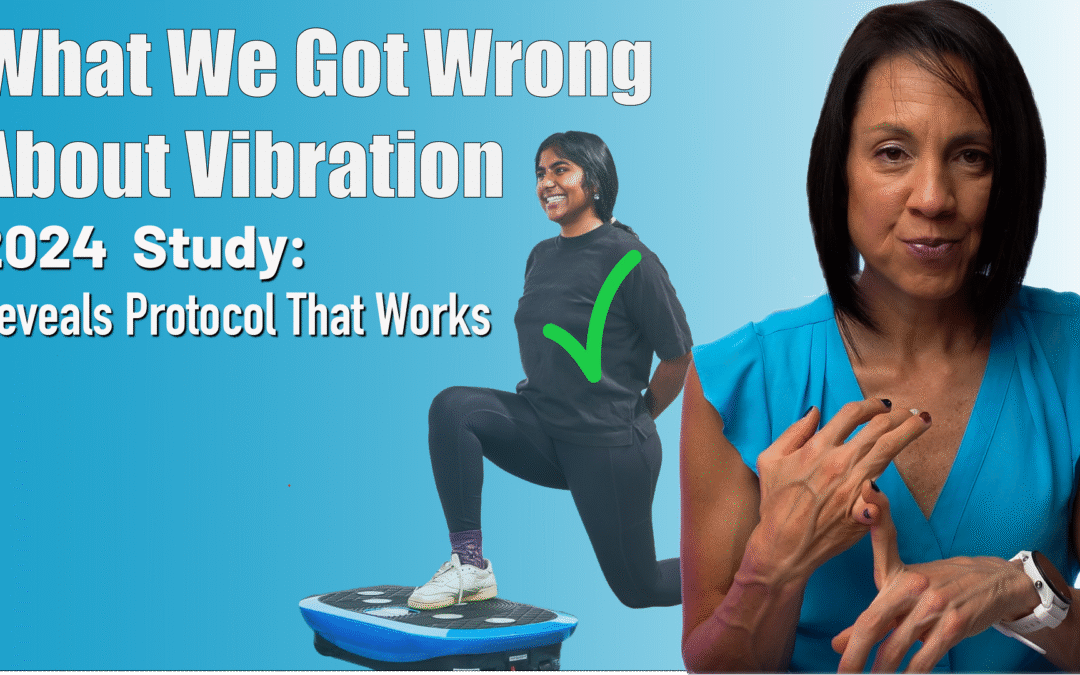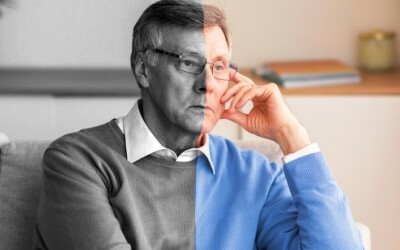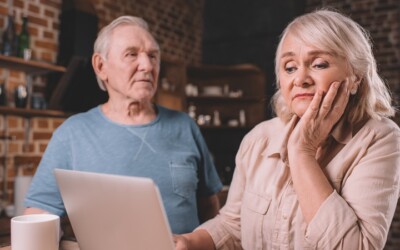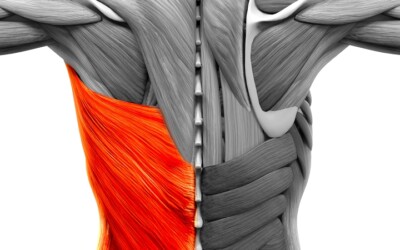It Just Vibrates… So Why Are Stroke Survivors Getting Better?
The Truth Behind the Research
When vibration plates first became popular, they reminded many of us of those old 1980s machines that promised to “shake” the fat away. Naturally, the skepticism was real.
But lately, vibration plates are being taken more seriously in the world of neurologic rehab, especially for people recovering from stroke. So… do they actually work?
Let’s break down the research, the science, and most importantly, how this applies to your recovery.
What Are Muscle Spindles & Why Do They Matter?
Before we dive into how vibration plates might help, we need to understand muscle spindles. These are specialized sensory receptors located inside your muscles.
These spindles detect:
- Muscle lengthening
- Speed of stretch
When a muscle stretches too fast (say, you’re falling), the muscle spindle sends an immediate signal to contract that muscle to protect you. At the same time, it also inhibits the opposing (antagonist) muscle, helping your body respond quickly and smoothly.
But that’s not all. Muscle spindles also send a signal up to your brain, telling it where your limb is in space. And the brain, in turn, can override reflexive responses by sending inhibitory signals back down to reduce involuntary movements.
What Happens After a Stroke?
After a stroke, The brain’s control over reflexes weakens. Muscle spindles still trigger automatic contractions, but the brain’s “braking system” is impaired. This can result in spasticity, abnormal tone, and difficulty moving smoothly.
Without that “braking system” from the brain, the muscle spindle reflex kicks in unchecked. That’s why a small movement, like tapping your foot on the ground, might cause an exaggerated response.
How Do Vibration Plates Help?
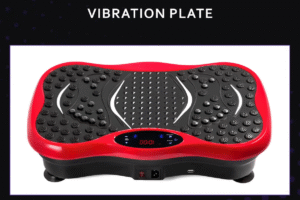
Vibration plates work by stimulating the same nerve fibers involved in the muscle spindle reflex, particularly the 1A sensory nerves. Potential Benefits include:
- Inhibit spasticity: Continuous vibration may “wear out” the nerve (nerve “fatigue”), reducing its reflexive contractions.
- Enhance limb awareness: Vibration sends signals to the brain, potentially improving body awareness and coordination.
- Promote movement: Stimulating sensory nerves might lead to increased muscle activation and better motor output.
💡 Bonus Tip: This also explains why massage guns may reduce spasticity when applied to the opposite (antagonist) muscle group.
What the Research Shows
2019 Meta-Analysis
A large meta-analysis reviewed multiple studies involving vibration plates and stroke rehab. Here’s what they found:
✅ Reduced spasticity
❌ No significant improvements in balance, gait, or postural control
The catch? Most studies involved passive use of vibration plates. Participants were just standing or sitting without doing specific exercises.
2024 Study: Game-Changer
This newer study compared two groups:
- Both did the same conventional rehab program, such as NDT (neurodevelopmental techniques), balance work, strength training, and stepping drills.
- The only difference: one group did the exercises on a vibration plate.
✅ Both groups improved
💥 But the vibration plate group improved more, especially in balance, strength, and gait.
Why the difference? Movement-based exercises done with vibration likely enhanced sensory input and motor output, essentially “supercharging” the brain-body connection.
How You Can Apply This to Your Rehab
1. Don’t Just Stand on It
Use the plate during active movement. Try squats, weight shifts, stepping, or static standing with eyes closed. Passive standing won’t cut it if your goal is to improve function.
2. Target Spasticity
For lower leg spasticity (like pointing toes or foot drop), standing on the plate is more effective than sitting.
You can also try a massage gun on opposing muscle groups (e.g., stimulating the triceps to relax the biceps). The mechanism here is similar and may offer additional benefits.
3. Build a Plan Around It
The “conventional therapy” used in the 2024 study included:
- NDT-based posture control
- Leg strengthening (squats, lunges, quad sets)
- Static & dynamic balance tasks
- Visual deprivation exercises
- Stepping drills
Even without a vibration plate, this program showed meaningful improvements. If you’re not doing these now, consider adding them to your plan or show this to your therapist.
Final Takeaways
✅ Vibration plates can reduce spasticity
✅ When paired with movement-based therapy, they may boost gains in balance, gait, and strength
❌ Passive standing or sitting alone won’t give you the full benefit
If you’re looking for an affordable way to enhance your rehab, a vibration plate combined with the right exercises might be your missing piece.
👉 I’ve linked the vibration plate I personally use here. It meets the 20–30 Hz frequency used in the research.
Tools to Supercharge Your Recovery
Want a comprehensive rehab plan without bouncing between therapists or feeling lost?
Our Gold Membership Program includes:
- Ad free videos and handouts
-
Full access to 350+ home rehab exercise videos
-
Monthly Q&A sessions and webinars
-
A private discussion board I check daily
👉 Learn more at Rehab HQ
📞 Or schedule a discovery call to find out if it’s right for you.
Articles you may be interested in
When Your Brain Forgets Half the World: Understanding Hemispatial Neglect
When Your Brain Forgets Half the World A practical guide to hemispatial neglect after stroke Let’s talk about something that doesn’t get nearly enough attention—literally. It’s called hemispatial neglect.And if you’re dealing with it, you already know how frustrating,...
3 Big Balance Mistakes After Stroke—and How to Fix Them
Have you ever felt like your balance is fine at home… but the moment you step outside, it’s a totally different story? You’re not alone—and there’s a good reason for that. I talk to a lot of people who say, “I feel pretty confident walking around my house, but the...
Post Stroke “help” isn’t helpful: A Lesson from the Butterfly
“We delight in the beauty of the butterfly, but rarely admit the changes it has gone through to achieve that beauty.” — Maya Angelou “If only I had more help”… More therapy. More equipment. More family support. “Then things would be different. I would be different....
Neuroplasticity and Recovery: How Life’s Loops Shape Growth and Transformation
"The adventure of life is to learn. The purpose of life is to grow. The nature of life is to change." — Unknown “Why run that far when you have a perfectly reliable car?” Back in my marathon days, this rhetorical question was something I heard more times than I can...
Stroke Recovery for the Brain: Boost Memory, Focus, and Thinking Skills
Stroke Recovery for the Brain: Boost Memory, Focus, and Thinking Skills We often talk about walking again. Moving your arm again. Lifting your leg. And yes—those goals are important. But here’s what we don’t talk about enough: That moment you walk into a room and...
The Secret to Stroke Recovery Success
"The secret to winning is learning how to lose. That is, learning to bounce back from failure and disappointment—undeterred—and continuing to steadily march toward your potential. Your response to failure determines your capacity for success." -James Clear, author of...
The Hidden Culprit: How the Latissimus Dorsi Limits Shoulder Recovery After Stroke
The Hidden Culprit: How the Latissimus Dorsi Limits Shoulder Recovery after Stroke It’s the silent barrier most people never think about. When we talk about restoring arm movement after a stroke, most of the focus is on the obvious: the shoulder joint, the triceps,...
How to Fix Knee Buckling Post Stroke
Why Your Knee Buckles—and How to Regain Control Say Goodbye to Knee Giving Way and Hello to Confident Walking https://youtu.be/wNZxiTXTz7QWhat Is Knee Buckling? Knee buckling refers to a sudden, unexpected loss of stability in the knee joint, often described as the...
Understanding and Fixing Leg Cramps Post Stroke
Clonus Explained: What It Is, Why It Happens, and What You Can Do About It Stop Letting Leg Cramps Slow Your Recovery https://youtu.be/fGNGXoMSvT4 Can Clonus Affect the Way You Walk? Absolutely—Here’s What You Need to Know Have you ever felt your foot suddenly...
Why Your Hand Still Won’t Open After Stroke | 3 Mistakes to Fix
Why Forcing It Doesn't Work How to Stop Reinforcing the Wrong Patterns and Start Rewiring Your Brain for Real Recovery https://youtu.be/fDIgGLM8Kj0If you’ve had a stroke (or other neurologic injury), and your hand feels like it’s stuck in a fist or your arm just hangs...

